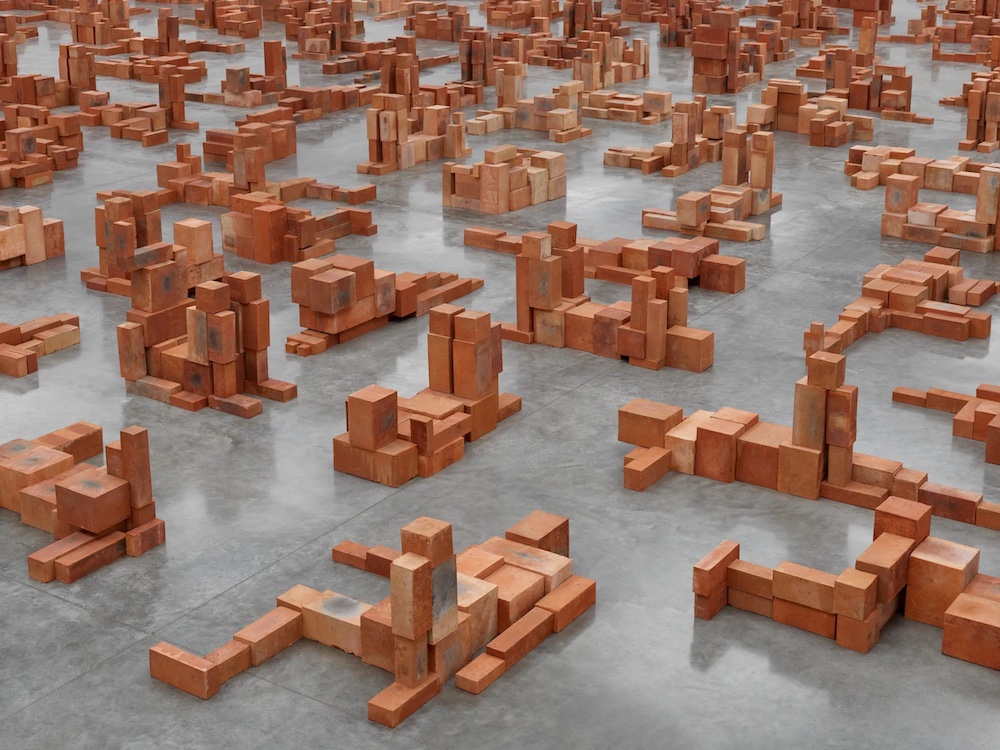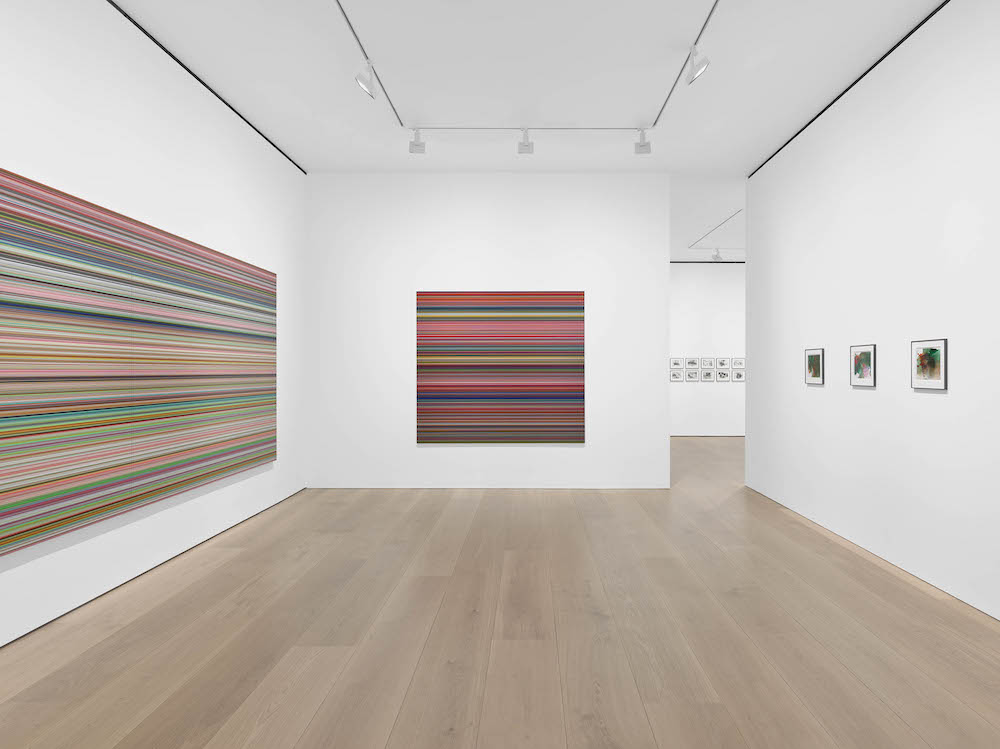Consider the rainbow, the arc of spectral light caused by light waves hitting raindrops in just the right conditions. It is a natural phenomenon, and something considered quite beautiful. But is it political? Jem Goulding, who opened “Never Seeing the Sky II,” an exhibition at STATION Gallery in Marfa, TX in January (on view through March 3), thinks so. The Marfa and LA-based artist is curious not so much about the actual phenomenon itself, but the human desire to experience and capture the rainbow through photography, in what she calls the “new politics of the camera.” Using handmade crystals based on military land cameras and periscopes from the 1930s to project spectrums, Goulding has fabricated her own rainbows, casting them onto canvases in a light painting of sorts.
When “Never Seeing the Sky”—which is planned as a 10-part series—was first shown at MAMA Gallery in Los Angeles, Goulding noticed a curious thing: the visitors were treating her rainbow much in the same way as a real rainbow, photographing it, standing in front of it to take selfies, and generally experiencing it through their phones. Whitewall caught up with Goulding to discuss The Fragile Balance—her award-winning film about the Russian ballet dancer Sergei Polunin—the politics of light, and how the Aurora Borealis inspired her.
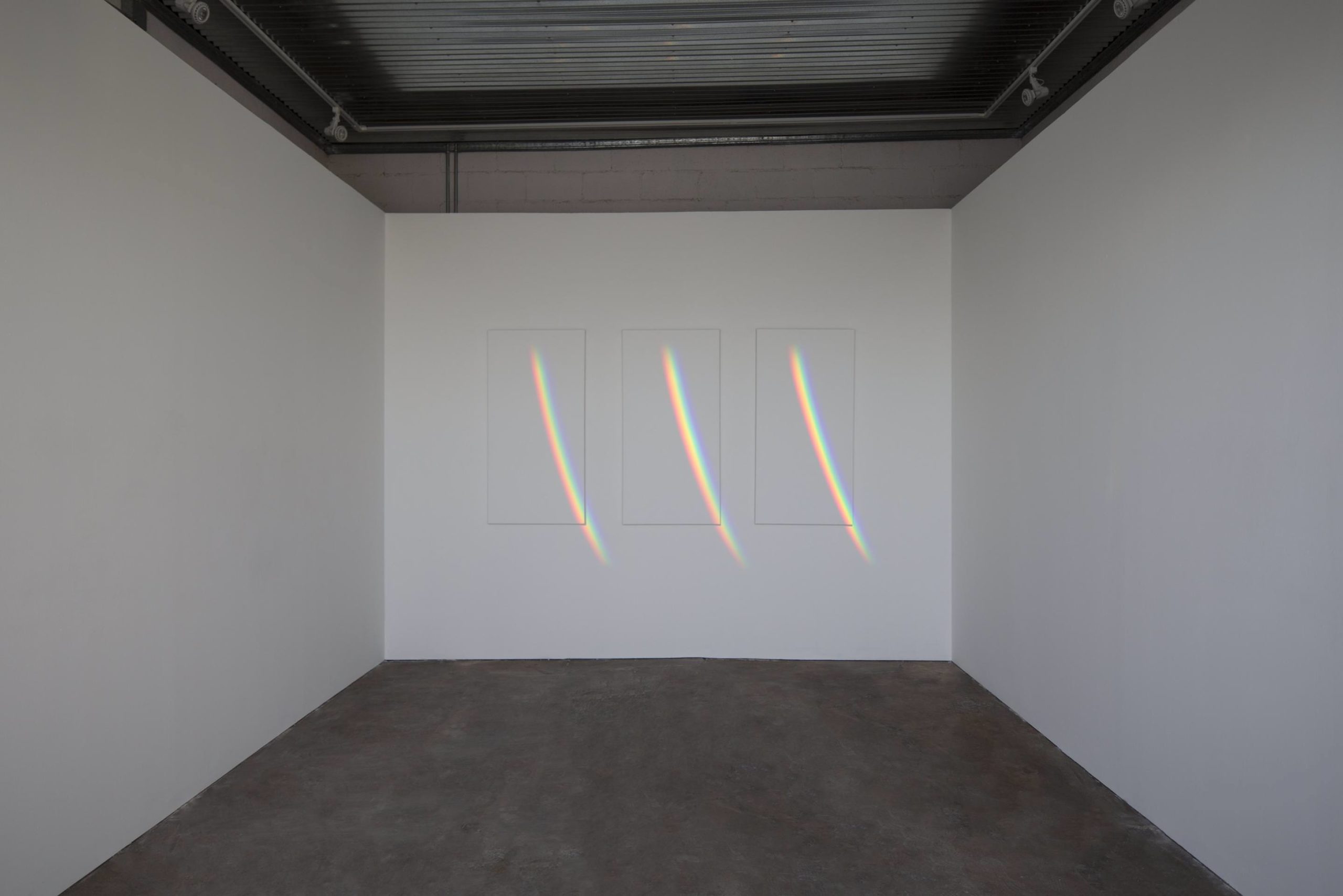
Jem Goulding
Never Seeing The Sky II
2016
Triptych, prismatic light on canvas, 24 x 48 x 3 inches
Photo by Yoseff Ben-Yehuda
courtesy of Station
WHITEWALL: Your show is at STATION, a new space in Marfa, where you have a part-time studio. Having lived in London for so long, how did you end up in Marfa?
JEM GOULDING: The Marfa Film Festival programmed The Fragile Balance to close the 2014 festival. I had never been before; I had barely heard of it. I got here, and fell in love, and did everything I could to tie up my loose ends in LA and London, and made this the base. Diplomacy is different here—you bump into the same person accidentally four times in one day. Everyone’s very caring. I still spend a lot of time in LA, New York, and London.
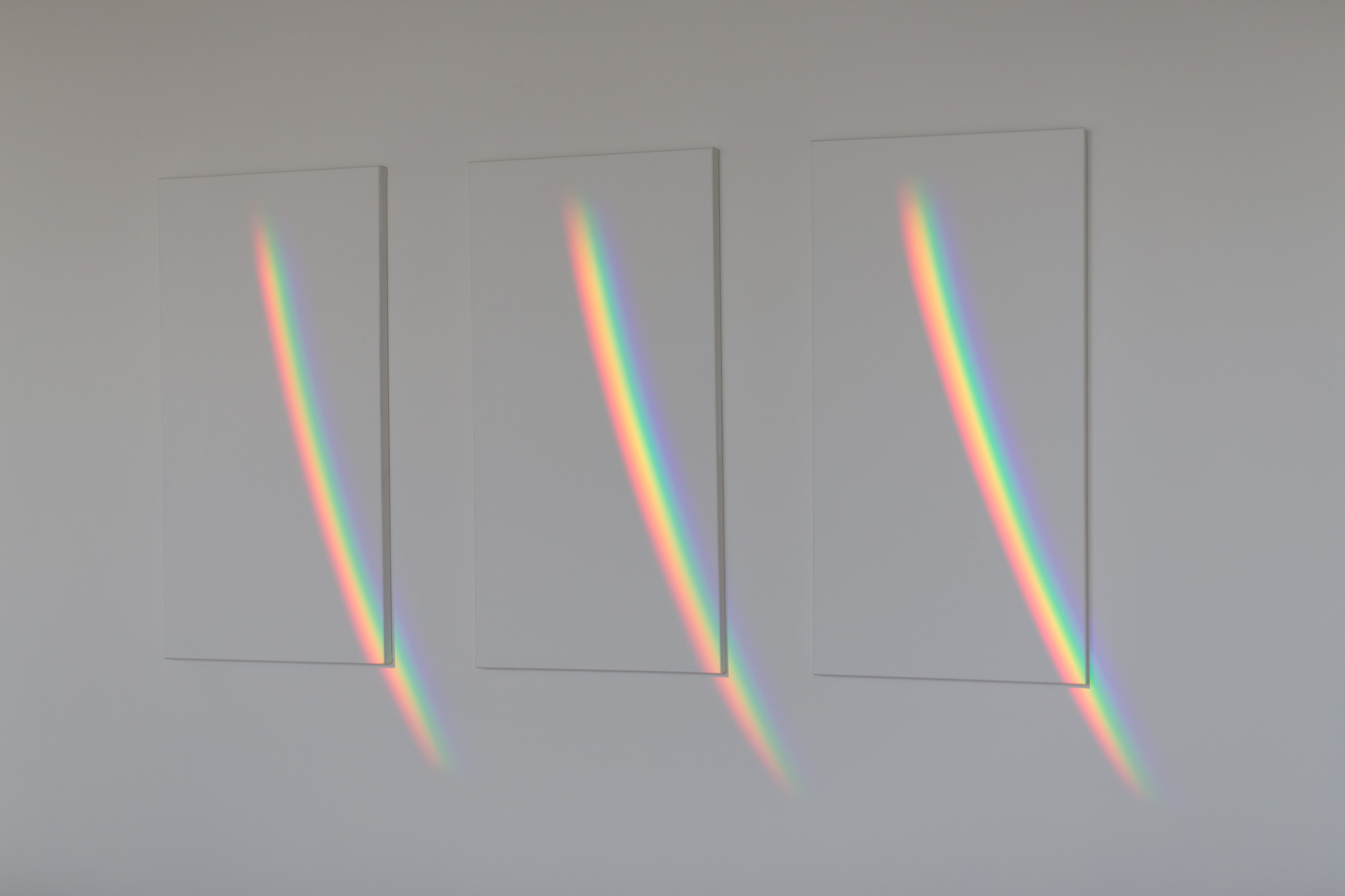
Jem Goulding
Never Seeing The Sky II
2016
Triptych, prismatic light on canvas, 24 x 48 x 3 inches
Photo by Yoseff Ben-Yehuda
courtesy of Station
WW: Your earlier work was in film and photography. What inspired the shift to the spectral works?
JG: When something is photographed en masse, it becomes abstract. We like to photograph rainbows. I do it too. Marfa rains a lot in the summer, and it puts out an incredible amount of rainbows. After a while, when things are photographed that much, you forget what they are. I aim to demystify the rainbow and other natural light phenomena to try and strip them of their “celebrity” or “brand.” Susan Sontag jaded me on photography—she makes sense of all that, pre-iPhone frenzy. She predicted that experiencing something is to take a photograph of it. I travelled to Lapland, into the Arctic Circle—just to shoot the Aurora lights. When I was standing and looking at the Aurora lights, there were people with mobile phones, and it didn’t bother me that they were experiencing it through their little squares in the third person, it was that the artificial lights emitted by the mobile phone was preventing us from seeing the Aurora lights. We’d all journeyed to the North Pole, because it’s the place with the least amount of light pollution, and there they all were creating artificial light pollution. That was the moment I started making this “super-unnatural phenomena” work.
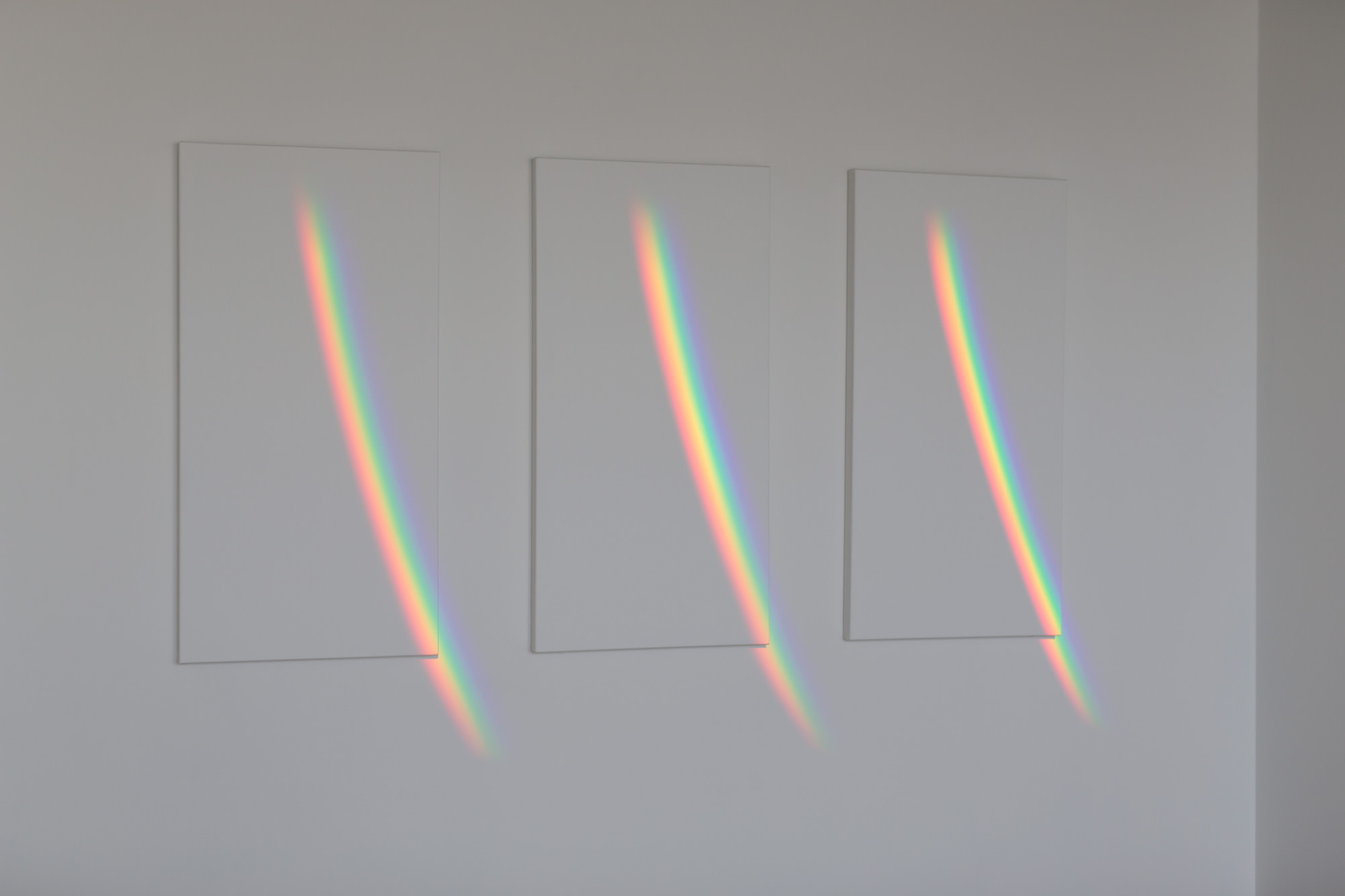
Jem Goulding
Never Seeing The Sky II
2016
Triptych, prismatic light on canvas, 24 x 48 x 3 inches
Photo by Yoseff Ben-Yehuda
courtesy of Station
WW: You have talked about using light on canvas as a way into phenomenology. How does your work change from seeing it in person vs. seeing a reproduction of it?
JG: The sculpture is an obvious powerful light shining through a specifically formed prism. Viewers can see how I’ve done it, but people tended to ignore how it was done, and focus on the end product, which was the “beautiful” part. It’s incredibly hard to photograph, but people attempt to. The digital sensor just picks up the primary colors; it doesn’t pick up all the colors in between. I created a sculpture that hopes to discuss the need for immediacy and the social currency that the proof of experiencing something provides. But this artwork demands you to put the camera down, because you won’t see what you see in real life. But the fact that it’s impossible to photograph is a byproduct of the work.
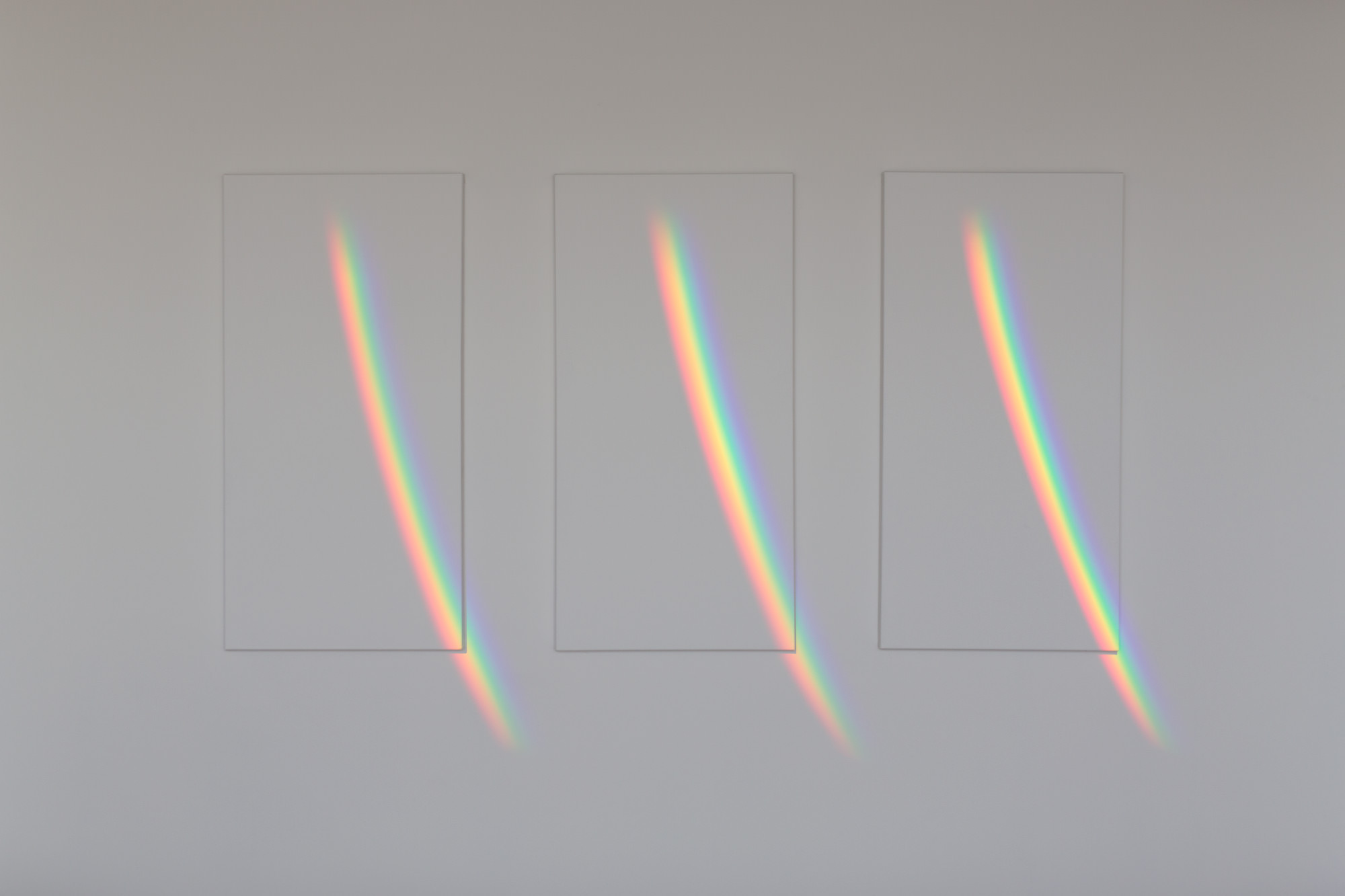
Jem Goulding
Never Seeing The Sky II
2016
Triptych, prismatic light on canvas, 24 x 48 x 3 inches
Photo by Yoseff Ben-Yehuda
courtesy of Station
WW: What were you initially setting out to do?
JG: I’m interested in people. Everything I do is about behavior, but not from a judgmental standpoint. Sometimes I imagine what people will say about this era of social media: how easy it is to share something, and what the selfie was. I’m interested in how beauty makes us behave. It’s not complicated what I’m doing. I didn’t want to make a piece of satirical art about how we have a need to photograph everything. It’s more melancholy. It’s pretty, but it’s sad to me. Look how easy it is to recreate an experience that should really only be experienced in nature, and look how easy it is to turn this light on and off, and create a spectacle.
WW: How do people react?
JG: I saw people pose against it with the prismatic light spectrum across their faces and doing a Bowie pose. We’re all aiming to elicit a response of any sort from an audience. How I see that is a deeper response—when a spectator activates the work by entering into the work physically. It’s a subconscious colonization to take over the piece. That’s why it’s political. I’m appreciative of it that people are responding physically and emotionally. They’re re-appropriating an appropriation I’ve already made of the rainbow.





